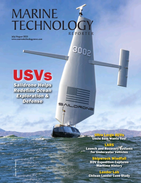Woods Hole Oceanographic Institute to Extend Alvin’s Diving Capacity
In the next generation of Alvin, Woods Hole Oceanographic Institute plans to design a submersible that can reach depths beyond the present limit of 4,500 meters. Dan Fonari, a scientist that studies deep-sea volcanoes, and has been on more than 100 Alvin dives said, “ Right now Alvin allows us to see 63 percent of the ocean, we want to see 98 percent.” That would require descending to depths in excess of 4 miles. The current proposal is for a next generation submersible that could go deeper and stay down longer with more room and better viewing ports. In 2004 the National Science Foundation awarded WHOI $22.91 million dollars. WHOI manages the National Deep Submergence Facility, a federally funded facility that operates, maintains, and coordinates the use of deep-sea exploration vehicles for the U.S. research community, including its only human-occupied submersible, Alvin. After initial estimates for design, construction, and testing nearly doubled and material costs soared, a new plan was developed. Instead of replacing the entire vehicle, several new key components would be built into the existing one. During stage 1 Alvin’s frame will be modified. This modification will allow for a larger, more pressure resistant sphere with larger viewing ports. As more funding becomes available other Alvin systems will be modified to increase the submersibles depth capacity to 6,500 meters. A new personnel sphere is currently under construction. The sphere is the biggest technical challenge. It must be flawless and without any deformities. Crew compartments are often spherical with no edges, distributing external forces evenly over the structure making it the strongest possible shape. If there are any deformities that weaken the structure there is potential for it to crush under pressure.








 August 2025
August 2025



